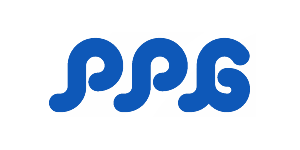
Palm Products GmbH company highly appraised among professional musicians was founded in 1975 in Germany by Wolfgang Palm. When a student he created a guitar all by himself. In college, while studying physics, he heard Emerson Lake&Palmer’s "Lucky Man" on the radio and this solo was an impulse to devise his first synthesizer.
By the day Palm graduated and each member of his band was happy to split he had already sold a few small synthesizers reminding Moog but costing 4 times less. Minimoog charm faded when Wolfgang took interest in patch cords and his approach to the synth making changed. That’s how PPG 1002 came out.
Once upon a time a humble brand organized by Palm was approached by Christopher Franke and Peter Baumann of Tangerine Dream. They asked him to produce keyboard with more than one wheel so that they could have access to 8 various modulation sources simultaneously during live performances (we talk now about the times when the patch storing function wasn’t something expected from synthesizers).
Wolfgang was worried about analog synthesizer pitch instability that’s why he got down to working on digitally controlled oscillators. The first Palm’s instrument which incorporated DCO was 1020. Soon he was finding a solution to the memory settings issue without any microprocessor building a complex system for PPG 1003 Sonic Carrier.
The company was finally formed after Musikmesse 1977 when Wolfgang Düren joined Palm.
First time the company was going through the difficult times and had to fight competitors’ hit product attacks from USA and Japan. The distribution of the microprocessors and the threat of market invasion by such instruments as Prophet 5 и 8-Voice made the German developer think even quicker especially about the ways of creating polyphonic synthesizer simpler and so that its waveforms could vary dynamically generating any possible sound. Wolfgang Palm focused on wavetable synthesis. Before that PPG had already released quite a complex and expensive digital synthesizer System 340/380. It comprised 3 rack modules (Processor Unit, Generator Unit, Event Generator – 16-track sequencer) and a “computer terminal” with a monitor, floppy disk drive and 5-octave keyboard. Although the instrument got popular only in narrow musical circles.
The majority of the instruments of the 1980s offered only a limited sound palette resulting from simple waveforms combination. The first try to develop the new sound synthesis technology clearly influenced Waveсomputer 360 instrument though the series didn’t have filters which reduced the sound range significantly – it was kind of a harsh tin voice. That weakened the position of PPG making it look minor comparing to growing Fairlight or Oberheim and Sequential Circuits. The series included a 4-voice A model and 8-voice B model. Wave series synthesizers were a smart move by PPG trying to fix the situation and adding analog filters to the wavetable synthesis.
When Peter Vogel saw Wave 2 at the exposition he ironically admitted that better than the new PPG product can only be his Fairlight. Wave 2 debuted in 1981 priced at $10 000 but this time equipped with filters and which is the most important – with a brand wavetable synthesis feature (64 waveforms x 30 wavetables = 1920 waveforms per oscillator). The next series model called Wave 2.2 (1982) was driven by 16 oscillators. Palm couldn’t ignore sampling and devised Terminal for Wave series thanks to which he got closer to the successful Fairlight and cut the price reasonably enough. Wave 2.3 became multitimbral and supported MIDI.
Kurzweil which was hugely popular on the USA market made Palm think of a dynamic keyboard. In 1983 PRK (processor-keyboard) came out and Wolfgang understood that synthesizers with MIDI implementation can be controlled by any master keyboard and other companies which actually specialize on them would release something better in no time.
In 1982 Waveterm computer rackmount system came out - with its own operating system created for integration with other PPG instruments and simplifying work with the sound waveforms.
It was the end for Palm Products GmbH (and it wasn’t a surprise for those brands innovations of which were one step ahead of the history) with the most ambitious and even kind of surreal brand’s project – Realizer studio machine. The prototype promised to combine recording functions with sequencer and mixer adding complex sampling and synthesis system. Synthesizer emulation was also available. The price for such a clever – which didn’t go along successful commerce in 20 century – reached $60 000. Of course, it was never sold. PPG went deep into debt and in 1987 officially ceased production.
Technologic designs and innovations introduced by Wolfgang Palm were never forgotten and now they’re widely used by another famous synth maker called Waldorf where the PPG founder works as a main chief constructor. Waldorf Microwave, for example, built its sound fully on PPG wave 2.2. Waldorf conquers music market and keeps on releasing advanced digital synthesizers based on wavetable synthesis. Palm’s impact is obvious and significant in the instruments of such renowned brands as Ensoniq, Access, Steinberg, E-mu and others.

